As a pilot, gun nerd and amateur historian, I have long been enamored with World War II aviation. I certainly have no corner on that market. Even today, some 79 years after the guns fell silent, rivers of ink and countless trillions of electrons are still being expended exploring the nuances of WWII air combat.
Like most normal males, I have dreamt of owning a WWII fighter plane my entire adult life. As do we all, I have my favorites. Were I to win the lottery or suddenly be inexplicably adopted by Elon Musk, the first thing I would do, right after setting my medical clinic alight, would be to get online and start shopping for vintage airplanes.
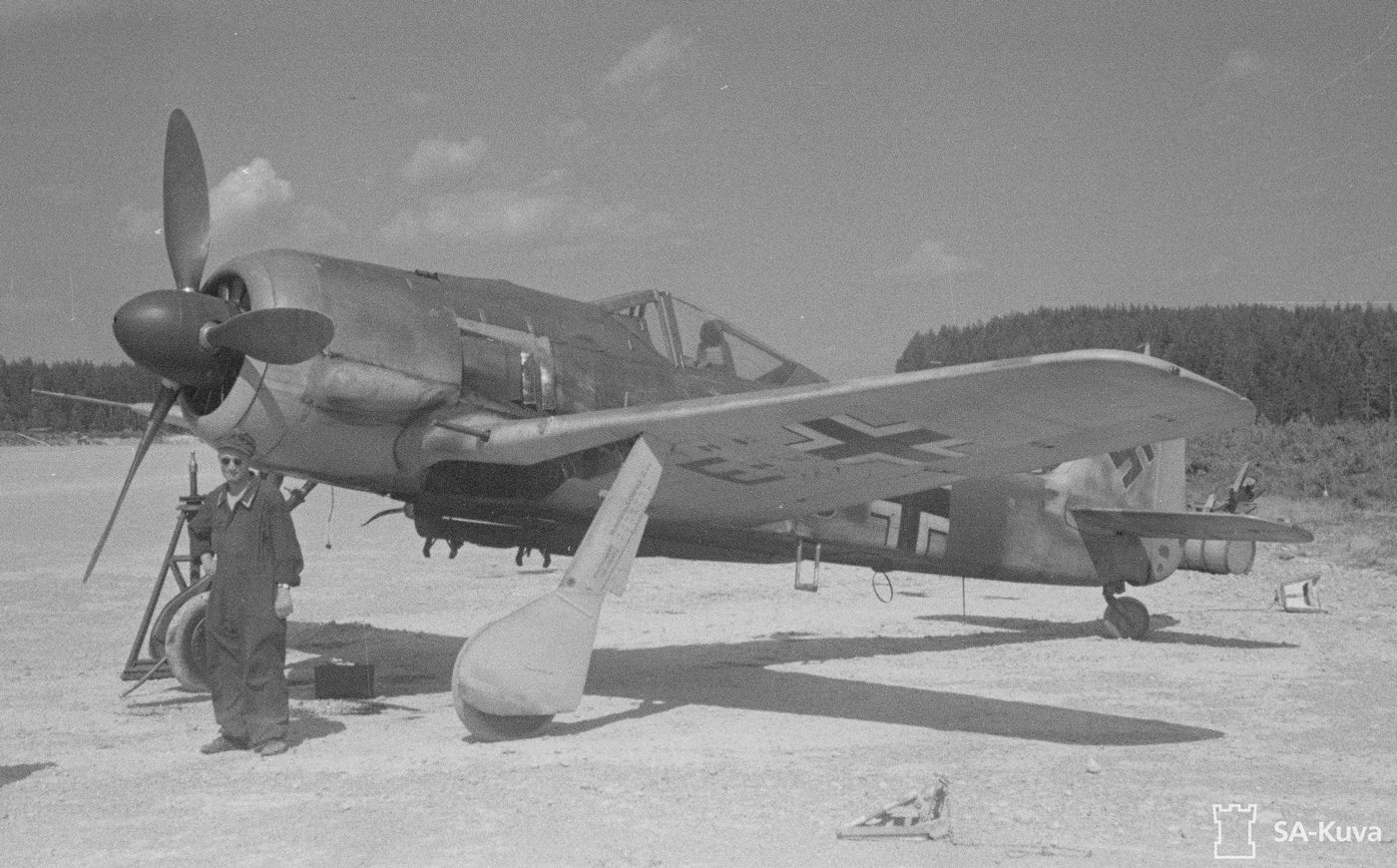
The P-38 Lightning is likely the most graceful flying machine ever produced. However, of 10,037 copies originally built, only 26 survive today. Of those 26, a mere 10 remain flyable. I doubt their owners would part with them for any amount of money.
The German Bf 109 was a sultry-looking beast. The Nazis were arguably the most repugnant single people group in all of human history, but their combat aircraft were amazing. The G-model Messerschmitt Bf 109 in the livery of the Jagdgeschwader 54 (JG 54) Grünherz looks a bit like a well-turned out flying shark. That thing sets my heart aflutter just looking at it.
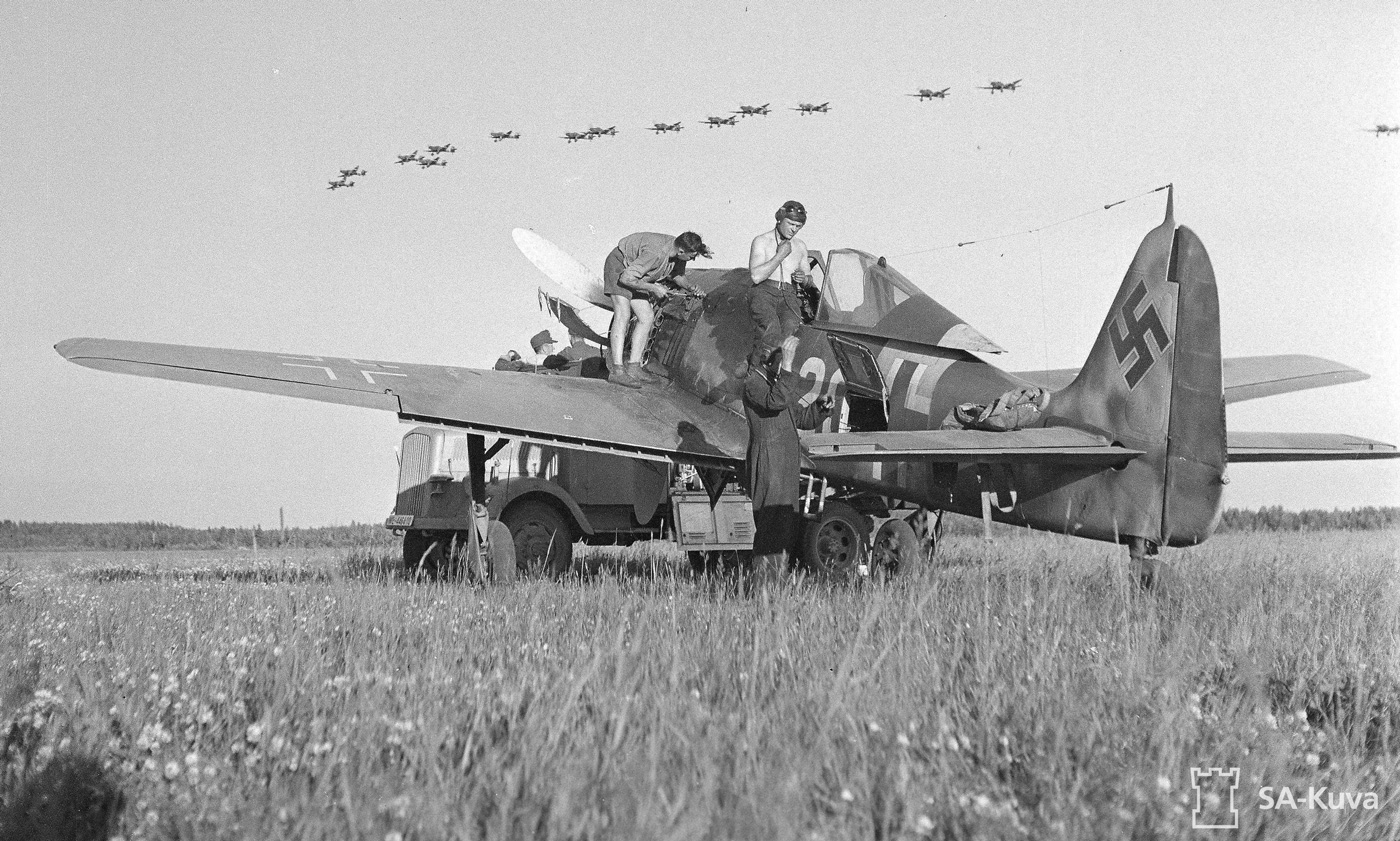
The Bf 109 was actually the most-produced combat aircraft in history, with 34,248 seeing service. A total of 67 survive to the present day, 20 of which are flyable. However, the combination of that powerful Daimler-Benz DB 605 engine and the 109’s spindly narrow-track landing gear made the plane notoriously difficult to manage on the ground. Fully 10% of the total production run of Bf109 fighters was lost to accidents on takeoff and landing.

While the Mustang, the Bf 109, the Zero and the Spitfire got all of the serious press, it was really the German Focke Wulf Fw 190 that was arguably the best all-around fighter of the war. Serving from August 1941 through to the German surrender, the 190 “Butcher Bird” proved to be forgiving, fast, powerful, adaptable, and lethal. As a day fighter, night fighter, fighter-bomber and ground attack machine, the Fw 190 excelled. If I could have one myself, I think the Fw 190 would be it.
Fw 190 Origin Story
Though few used it, the Fw 190 actually had a name. The official designation was Würger which means Shrike. In action, the plane was typically referred to by its manufacturer, Focke-Wulf, or simply as the 190.
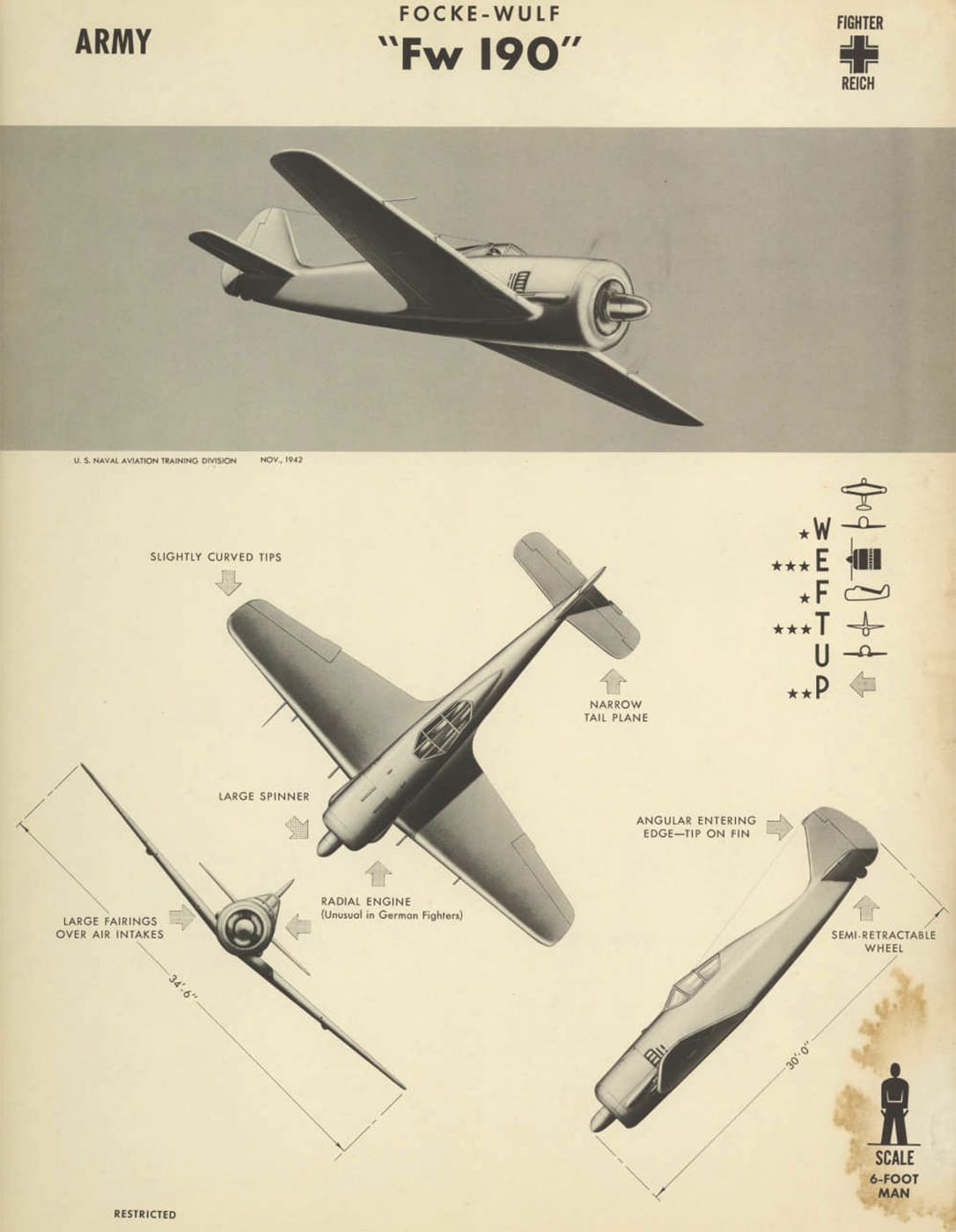
In the late 1930s, the German Bf 109 was the world’s premiere fighter aircraft. However, the Nazis knew that war was coming, and there was concern that production of the 109’s superb fuel-injected inverted-V water-cooled engine would not be able to keep pace with the manufacture of airframes. As a result, the German Ministry of Aviation (RLM) launched a contest to develop an alternative fighter. The winner was the brainchild of esteemed German engineer Kurt Tank.
What really set Tank’s plane apart was its use of the 14-cylinder BMW 139 radial engine. Yep, that BMW. Bavarian Motor Works (Bayerische Motoren Werke), Mitsubishi, Porsche, Walther, Isuzu, Fiat, and Volkswagen were all major producers of war materiel for Axis forces during the war.

At the time, radial engines were fairly rare on European warplanes. The necessity of a large open frontal area for cooling seemed incongruous with the demands of a fast, nimble fighter aircraft. However, as Tank and scads of American plane designers soon discovered, with appropriate streamlining, these rugged radial powerplants could offer both high performance and combat survivability that those sensitive liquid-cooled engines could never manage.
The solution was something called a NACA cowling. The National Advisory Committee for Aeronautics was a U.S. federal agency established in 1915 to promote aeronautical research. NACA research developed an airfoil-shaped ring that could be built around the periphery of a radial aircraft powerplant that accelerated the airflow into the engine space and allowed the actual cowl opening to be reduced in diameter. By carefully sculpting the subsequent cowling geometry, the overall airframe could still me made quite slippery.
Details
One of the most laudable aspects of Kurt Tank’s design was the landing gear. That of the Bf109 folded outward. This narrow track design allowed the gear to be mounted on the fuselage rather than the wings for maximum strength. However, the resulting narrow wheel base made the plane quick to tip over, particularly when suddenly subjected to the torque of its powerful engine.
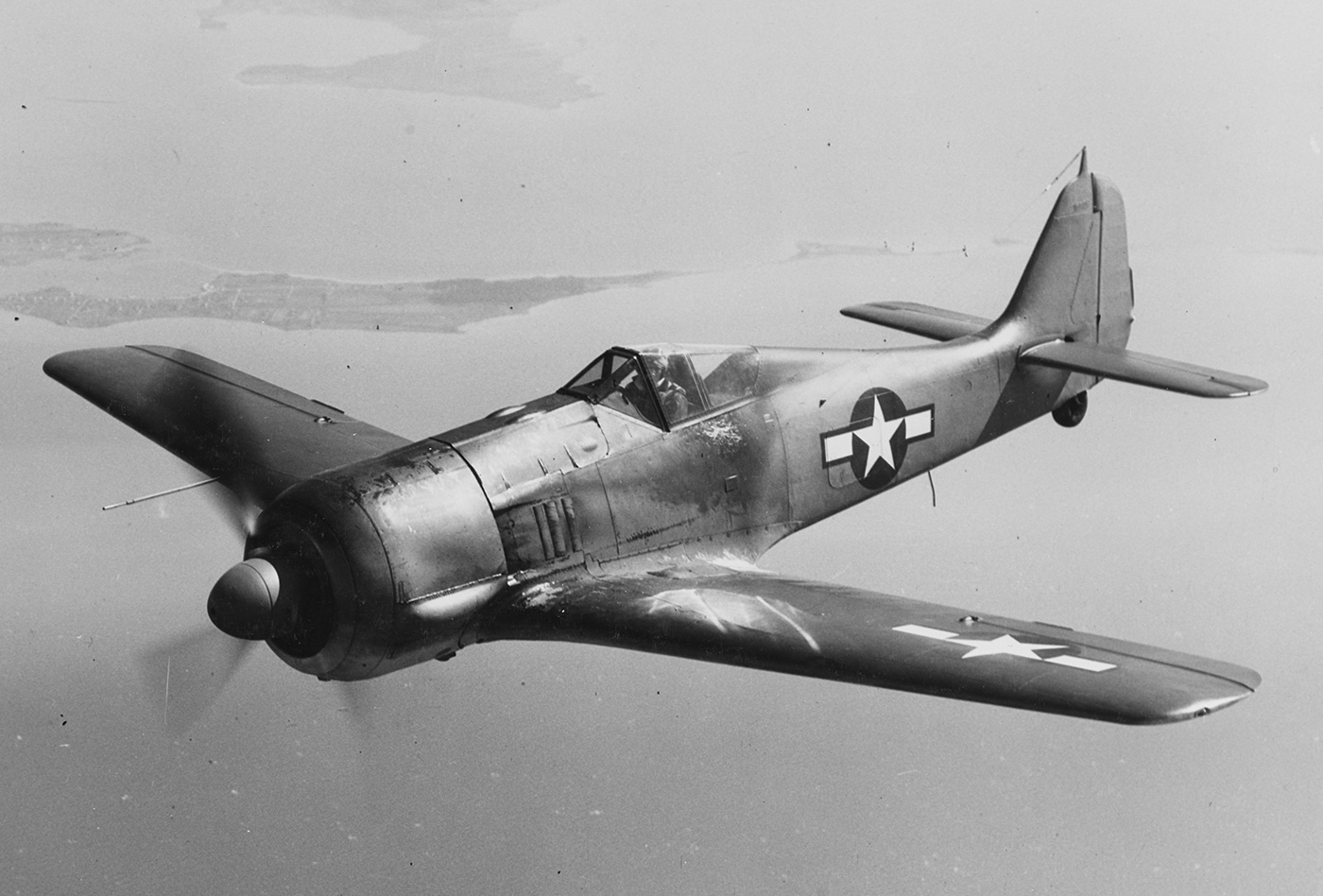
By contrast, the gear on the Fw 190 mounted fairly far out on the wings and folded inward. This made the plane exceptionally forgiving on the ground. Particularly as the war progressed and Luftwaffe fighter pilots were sent into action with minimal training, this became a critical aspect of overall aircraft survival.
The Fw 190 also turned out to be an exceptionally versatile design. The airframe accommodated a variety of armament configurations as the plane evolved to include external bombs, rockets and even aerially-delivered torpedoes. The Fw 190 A-8 was arguably the apex of the basic design. The A-8 included a pair of 13mm MG131 machine guns in the cowling synchronized to fire through the propellor arc, a pair of similarly synchronized 20mm MG151/20 cannons in the wing roots, and another pair of MG151/20’s further out in the wings outside the swing of the prop.
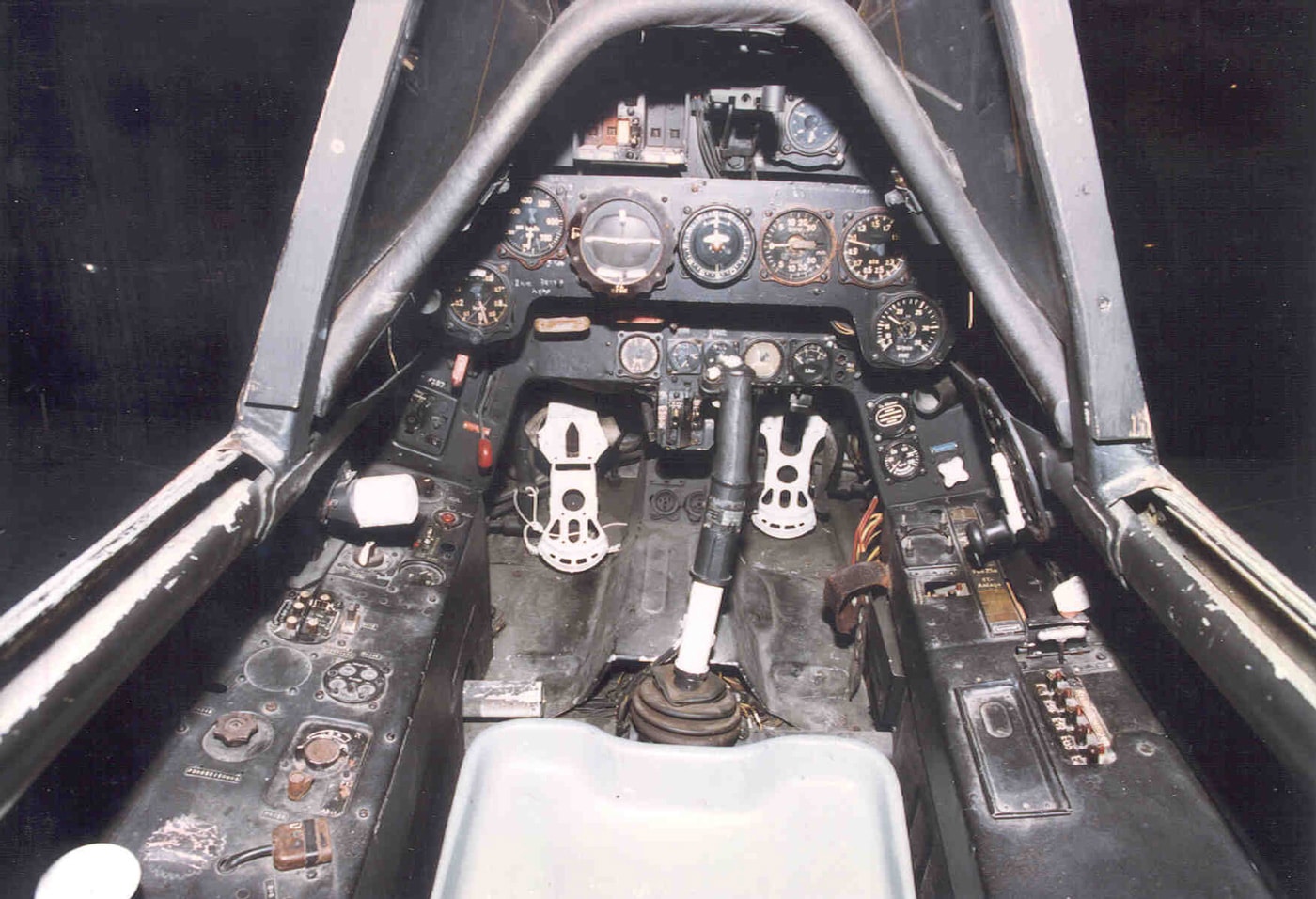
At the time, most combat aircraft used cable connections for the flight controls. However, these cables were subject to both combat damage and stretching over time. As a result, Tank primarily utilized rigid pushrods. This design offered reliably responsive controls and enhanced ruggedness.
Flexibility of the Focke-Wulf
The Fw 190’s versatility was really unmatched, particularly considering the frenetic circumstances under which the plane was developed. The 190 was a feared and respected dogfighter. Unlike many designs of its era, it was also effective both at high altitudes as well as down in the dirt.

A Luftwaffe fighter jock once likened attacking massed American heavy bombers to trying to copulate with a porcupine. Particularly when equipped with underwing Werfer-Granate BR21 rockets and heavy 30mm Mk108 gun pods, the 190 represented a dire threat to the American bomber force. The plane was also a formidable ground-attack platform.
General-purpose bombs and cluster munitions made the Focke-Wulf a devastating close support aircraft, particularly on the Eastern Front. In the East, the Luftwaffe did not face the same formidable air defenses as was the case in the West. Dedicated ground attack units of Fw 190’s eventually took over the role of the Stuka dive bomber in supporting Wehrmacht and Waffen SS formations.
German Fighter War Story
In its prime, the Fw 190 represented a closely-guarded military secret. Details about the plane’s design, armament and material science were enigmatic to the British who found themselves on the receiving end of the feared Butcher Bird. And then, on 23 June 1942, a Luftwaffe pilot named Armin Faber made a navigation error and inadvertently gave the British one of the greatest intelligence coups of the war.
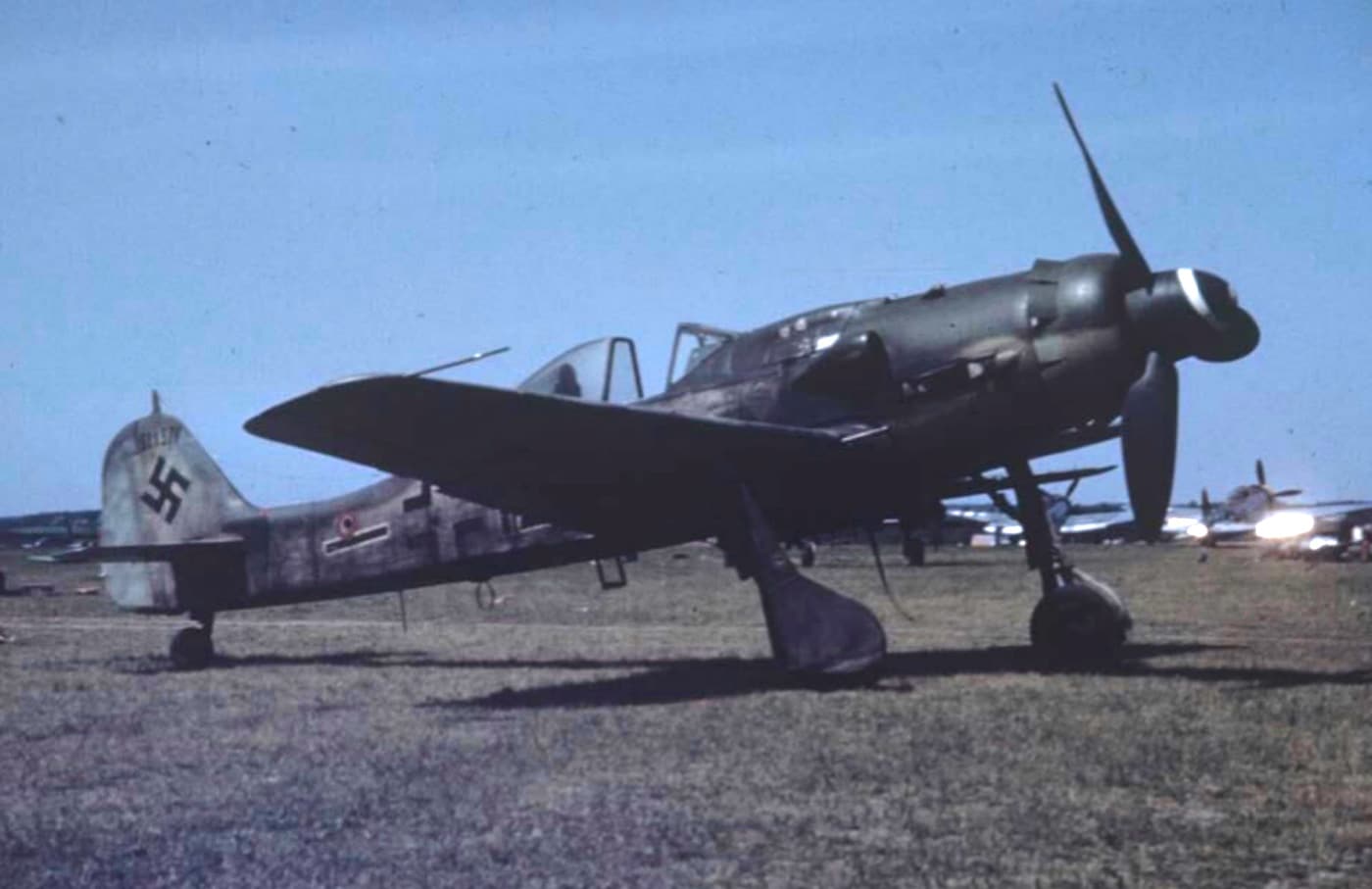
Oberleutnant Farber’s day job was as admin officer for JG2. However, desk jockey pilots still need to get their flight time. In 1942, this meant the occasional combat mission. On 23 June, Faber took off from his base in France to intercept a force of British A-20 Boston medium bombers. There resulted a vicious air battle between Faber’s 190’s and a group of Supermarine Spitfires flown by Czech pilots out over the English Channel.
Amidst the subsequent chaos, Faber shot down a Spitfire but wandered over Devon and got disoriented in the process. Mistaking the Bristol Channel for the English Channel, he turned north assuming he was headed home. Thinking South Wales was actually France, he angled towards RAF Pembrey for fuel.
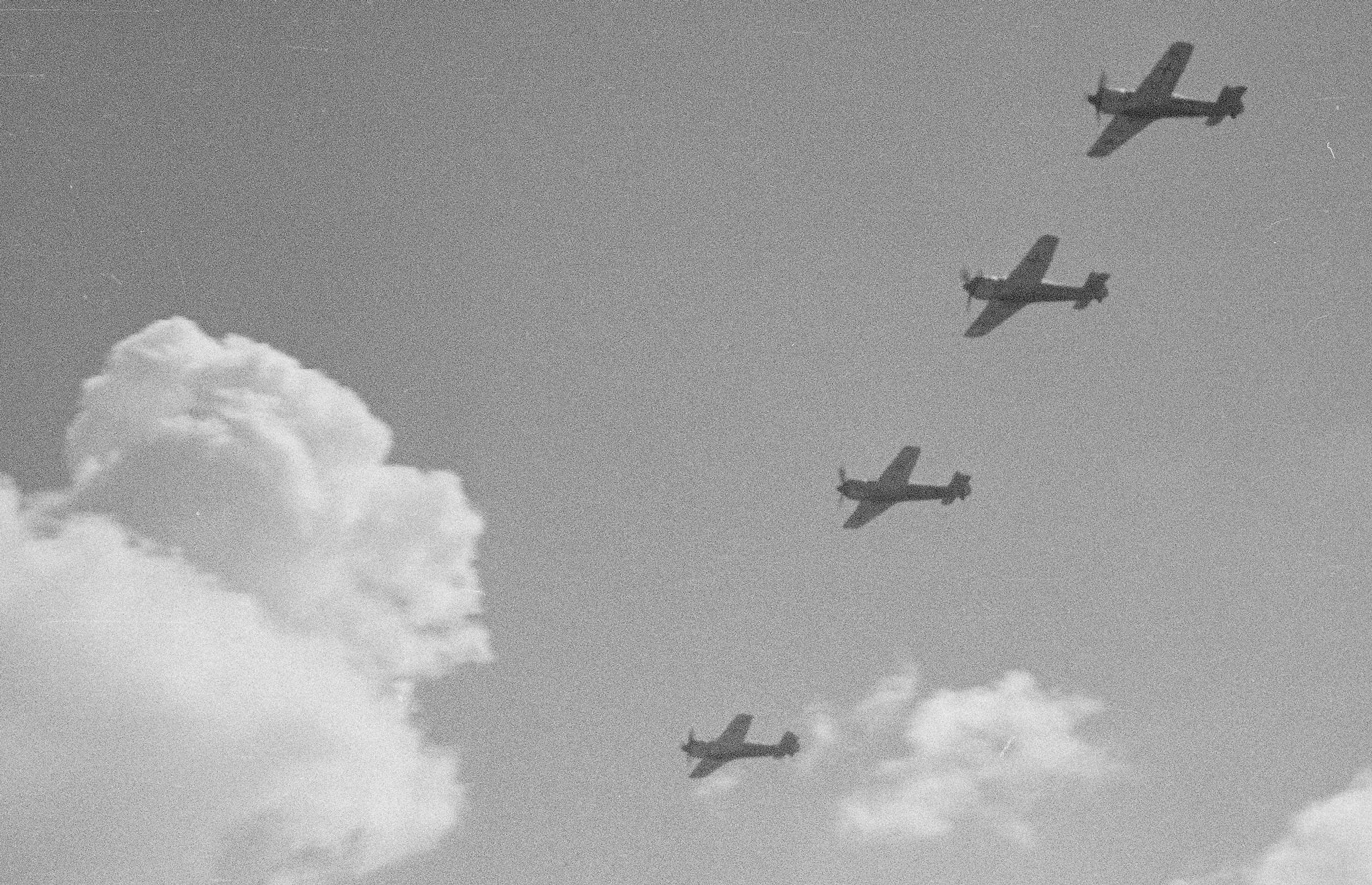
Faber buzzed the field and waggled his wings to celebrate his recent aerial victory. He then lowered his gear and landed uneventfully. Incredulous British ground crew duly guided him to parking and then surrounded his airplane. A British Sergeant named Jeffreys leapt onto the wing of the 190 armed with a flare gun, the only weapon he had handy.
When Oberleutnant realized his mistake, he tried to kill himself. The Brits stopped him and hauled him bodily out of the cockpit. As he was later being transported to RAF Fairwood Common for debrief and interrogation under the watchful eye of Group Captain David Atcherly, the staff car hit a pothole and Atcherly’s revolver discharged, narrowly missing the despondent German pilot. Faber spent the rest of the war in a POW camp in Canada.
Ruminations
It is easy to judge Oberleutnant Faber. However, within the tight confines of a Focke-Wulf cockpit in the days before GPS and electronic navigation beacons, it was an honest mistake. Regardless, this grievous spot of aerial confusion gifted the British with what was arguably the most advanced fighter aircraft in the world at the time.
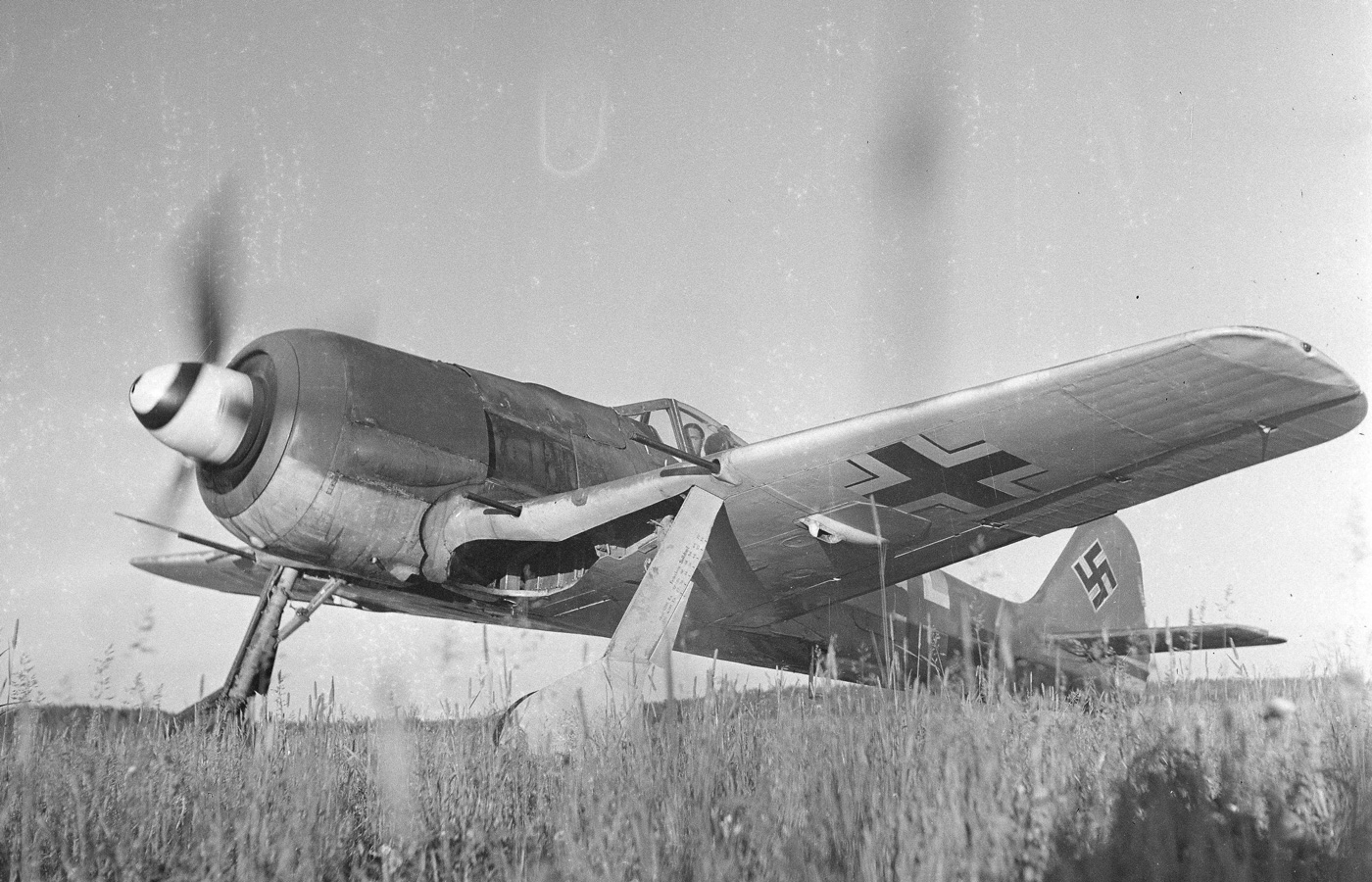
Later versions of the Fw 190 like the D-9 and Ta-152 used inline water-cooled engines. Today, only one original Fw 190 remains flyable. However, in 1997, a German company called Flug Werk GmbH began producing modern full-scale replicas.
Most of these planes are powered by Chinese Shvetsov Ash-82 14-cylinder radial engines that are very similar in output to the BMW originals. By 2012, they had produced 20 airframes. If you’re in the market for a Christmas or birthday present for me sometime, I’m just throwing that out there.
Editor’s Note: Please be sure to check out The Armory Life Forum, where you can comment about our daily articles, as well as just talk guns and gear. Click the “Go To Forum Thread” link below to jump in and discuss this article and much more!
Join the Discussion
Read the full article here

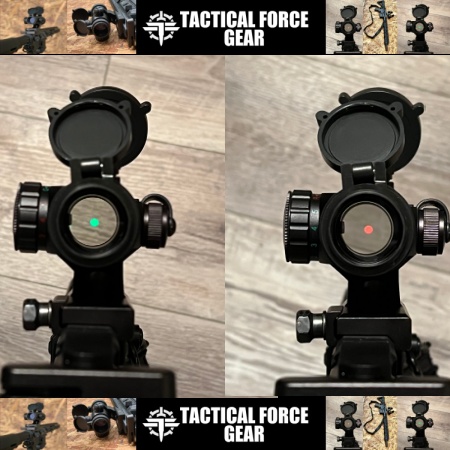
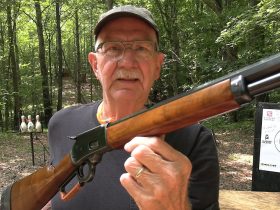

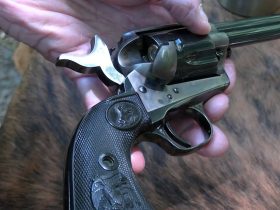
Leave a Reply